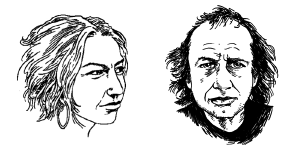Vito Acconci’s extraordinary career—poetry, art, architecture: a sort of triathlon of the arts—began in the Bronx, where as an aspiring author of seven years he wrote stories about cowboys and athletes. At his Catholic college, he published sexy stuff about priests and nuns that got the school magazine banned for three issues running. He went on to write fiction in the Iowa Writers’ Workshop. But when he came back to New York in the early ’60s, something changed, and he began writing poems. Highly conceptual constructions, they did not tell stories, express feelings, or evoke a fictional world. They were not representational. Maybe you could call them presentational: this is a word, this is a sentence, you are reading. (“READ THIS WORD THEN READ THIS WORD READ THIS WORD NEXT READ THIS WORD NOW” is how one piece begins.) The page was a space around which the reader navigated. Words were obstacles, lures, street signs, prompts. Instead of describing the actions of a fictional character, they provoked the actions of a real one: the reader.
Before long, a page began to seem too small to contain all this movement. Poetry readings gave Acconci an opportunity to ease words out into three dimensions. On one occasion, he dealt out letters of the alphabet on tables, using them to prompt readings as he meandered through the room. But before long, with Following Piece, he had left the page behind, allowing a series of total strangers to lead him out into the city. Moving in real space meant using his own body, no longer a reader’s, and Acconci directed his attention at that body in a series of fiercely physical performances, biting himself, burning off his body hair, and most notoriously, in Seedbed, masturbating under a wooden ramp installed in the Sonnabend gallery, while fantasizing through a loudspeaker about the people walking above him. Despite the focus on the body, language played an essential role, both disclosing his activity, which would otherwise have remained private, and drawing the audience into complicity with it. Like the body, language is both utterly personal and the basic currency of public relations, and in the spoken-word monologues that accompany his later videos, Acconci plays with this paradox. Open Book, for instance, is a ten-minute, close-up video of Acconci’s wide-open mouth as he tries gamely to issue invitations to the viewer without ever closing his lips. The mouth becomes a book, but one that, precisely because it is open, cannot speak.
Later installations that combined spoken-word recordings with proto-architectural constructions brought words into closer relation to physical space and physical objects. They also brought them into closer relation to an audience. Acconci’s...
You have reached your article limit
Sign up for a digital subscription and continue reading all new issues, plus our entire archives, for just $1.50/month.
Already a subscriber? Sign in





